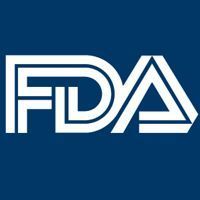Article
Orca-T Displays GVHD Prevention, Scalability Potential, and Tolerability in Hematologic Cancers
Author(s):
February 11, 2021 - Treatment with the first-generation precision cell therapy Orca-T led to a significant reduction in cases of graft-versus-host disease, an impressive GVHD relapse-free survival rate, a lack of treatment-related mortalities, while showcasing scalability potential.
Everett H. Meyer, MD, PhD

Treatment with the first-generation precision cell therapy Orca-T led to a significant reduction in cases of graft-versus-host disease (GVHD), an impressive GVHD relapse-free survival rate, a lack of treatment-related mortalities, while showcasing scalability potential, according to data presented during the 2021 Transplantation & Cellular Therapy Meetings.1
In the analysis, which combined 2 trials, Orca-T–treated patients experienced improvements compared with a historical comparison to standard of care in median time to neutrophil engraftment (12 days vs 14 days; P <.0001), median time to platelet engraftment (11 days vs 17 days; P <.0001), and median time from day 0 to hospital discharge (15 days vs 17 days; P = .01).
Results showed that all patients engrafted and that there may be a sign of early engraftment for trial participants, explained lead study author Everett H. Meyer, MD, PhD, in a virtual presentation of the findings.
“Orca-T has good evidence for reduced GVHD, reduced chronic GVHD, a low non-relapse mortality,” said Meyer, who is an assistant professor of medicine and pediatrics at Stanford University Medical Center. “In addition, the concept of going from a single center to multiple centers and scalability has been proven, with good vein-to-vein time of 72 hours across the continental United States. Due to this, Orca-T has achieved Regenerative Medicine Advanced Therapy status from the FDA and we very much look forward to the clinical trial continuing.”
Moreover, data showed that the GVHD-free relapse-free survival rate was 75% with Orca-T and 31% with the historical standard control cohort.
Acute GVHD is driven partly by heterogeneity in the donor-graft composition and the number of T cells in the grafts. T-cell depleted grafts can be used to reduce the risk of GVHD. However, T-cell reduced grafts and conventional grafts, where 1 million or more T cells are administered, are associated with a substantial risk of GVHD that single-agent prophylaxis cannot overcome.
Tregs, which are comprised of CD4+, CD25+, CD127-low T-regulatory cells, help control immune responses. Earlier findings have demonstrated that adding donor-derived or third party–derived Tregs to the donor graft could prevent GVHD without compromising graft-versus-leukemia efficacy.
“Highly purified T-regulatory cells are sorted and administered on day 0 with hematopoietic stem cells,” Meyer explained on the product’s protocol. “There is no immunosuppressive given, and the T-reg cells are allowed to expand to create the right microenvironment for the Tcons, which are then administered on day 2 at a matching dose to the T-regulatory cells.”
Early findings of the multicenter experience, which were presented during the 2020 ASH Annual Meeting, also demonstrated that Orca-T prevented GVHD with less immunosuppression compared with a contemporaneous cohort of patients with high-risk hematologic malignancies who underwent standard-of-care hematopoietic stem cell transplantation.2
The standard regimen is made up of myeloablative conditioning from 10 to 2 days prior to HSCT, followed by tacrolimus, which is given 1 day prior to transplant.3 On day 0, patients receive an infusion of 10e8 to 10e9 T cells/kg of the apheresis product. Patients are then given posttransplant prophylactic methotrexate on days 1, 3, 6, and 11.
In the Orca-T protocol, the same myeloablative condition is administered 10 to 2 days before transplant. On the day of transplant, patients receive an infusion of 3e6 Treg/kg of hematopoietic stem and progenitor cells and Treg. Patients then receive a 3e6 T-cell/kg infusion of Tcon on day 2; single-agent tacrolimus at 4 to 6 ng/mL target doses starts from day 3 on.
The phase 1 dose-escalation portion of the trial has been completed.
“As part of our trial effort, we also had a phase 2, stage I portion […] but we found that when we randomized patients to single-agent prophylaxis versus no prophylaxis, the patients with no prophylaxis showed GVHD instant[ly] similar to standard of care, although it was very responsive to steroids.”
To be eligible for the single-center, phase 2 trial (NCT04013685) out of Stanford University Medical Center, and the multicenter phase 1b trial NCT1660607) conducted by Orca Bio, patients must have had high-risk, minimal residual disease–positive active leukemia, lymphoma, myelodysplastic syndromes (MDS), or myeloproliferative neoplasms (MPNs). Additional requirements were a Karnofsky performance score greater than 70, an age younger than 65 years old, and be eligible for matched related or unrelated donor transplantation.
Data presented at the 2021 Transplantation & Cellular Therapy Meetings were from the combined cohorts.
In the Orca-T group of 50 patients, patient demographics were comparable to the standard-of- care control cohort (n = 144). The median age was 47 years (range, 20-65), and 52% of patients were male. Most were (60%) White, and the primary disease consisted of acute myeloid leukemia (42%), acute lymphoblastic leukemia (28%), chronic myeloid leukemia (4%), B-cell lymphoma (2%), MDS/myelofibrosis (16%), and other (8%).
Sixty-two percent of patients in the Orca-T cohort had graft source human leukocyte antigen—matched siblings; the rest (38%) had unrelated donors. Twenty-three percent of patients had active leukemia at the time of transplant, and the median follow-up was 223 days (range, 30-1561). Evaluated patients included those with at least 30 days of follow-up.
Regarding manufacturing, Meyer noted that the majority of this and logistics is carried out by Orca Bio as a single location.
“Products are sent from donor centers to Orca [Bio] for processing, and then to recipient centers, in collaboration with the National Marrow Donor Program,” Meyer said. “This has been highly successful with a vein-to-vein time of 72 hours, no manufacturing failures, and target dose or greater achieved for all of our patients.”
Further findings showed that patients treated with Orca-T experienced a reduction in grade 2 or higher acute GVHD compared with the standard control cohort, at 10% versus 30%, respectively. In the 4 patients who did have GVHD, 3 patients responded to steroids and 1 responded to secondary therapy, which was ruxolitinib (Jakafi).
Orca-T also led to a reduction in chronic GVHD compared with the historical control cohort, at 3% versus 46%, respectively. One patient who experienced moderate chronic GVHD responded to steroid treatment.
One patient did experience initial engraftment followed by graft loss; this patient had autologous recovery and remains in remission, Meyer noted.
Orca-T was also found to retain graft-versus-leukemia immunity in patients at relapse or with at least 180 days of follow-up. Despite markedly reduced GVHD rates with Orca-T, early data suggested that the graft-versus-leukemia effect is preserved.
Regarding safety, Meyer said that Orca-T was found to be overall well tolerated. No reactivation due to cytomegalovirus occurred in 36 patients (72%), 8 (16%) with low level viremia, and 6 patients (12%) required treatment. Additional infections included Epstein-Barr virus reactivation (n = 8; 1 patient required therapy), BK viruria/viremia (n = 4), rhinovirus (n = 1), clostridioides difficile (n = 4), bacteriemia (n = 7), norovirus (n = 1), adenovirus (n = 3), and HHV-6 (n = 2).
Eighteen percent of patients (n = 9) experienced serious adverse events, all of which resolved, and 10% of patients had hepatic veno-occlusive disease or sinusoidal obstruction syndrome
and responded to therapy. At the time of the presentation, the treatment-related mortality rate was 0% with Orca-T versus 11% with standard therapy.
References
- Meyer EH, Hoeg R, Moroz A, et al. Orca-T, a precision Treg-engineered donor product, in myeloproliferative HLA-matched transplantation prevents acute and chronic GVHD with less immunosuppression in an early multicenter experience. Presented at: 2021 Transplantation & Cellular Therapy Meetings; February 8-12, 2021; Virtual. Abstract
- Meyer EH, Hoeg R, Moroz A, et al. Orca-T, a precision Treg-engineered donor product, prevents acute Gvhd with less immunosuppression in an early multicenter experience with myeloablative HLA-matched transplants. Blood. 2020;136(suppl 1):47-48. doi:10.1182/blood-2020-142974
- Meyer EH, Laport G, Xie BJ, et al. Transplantation of donor grafts with defined ratio of conventional and regulatory T cells in HLA-matched recipients. JCI Insight. 2019;4(10):e127244. doi:10.1172/jci.insight.127244









